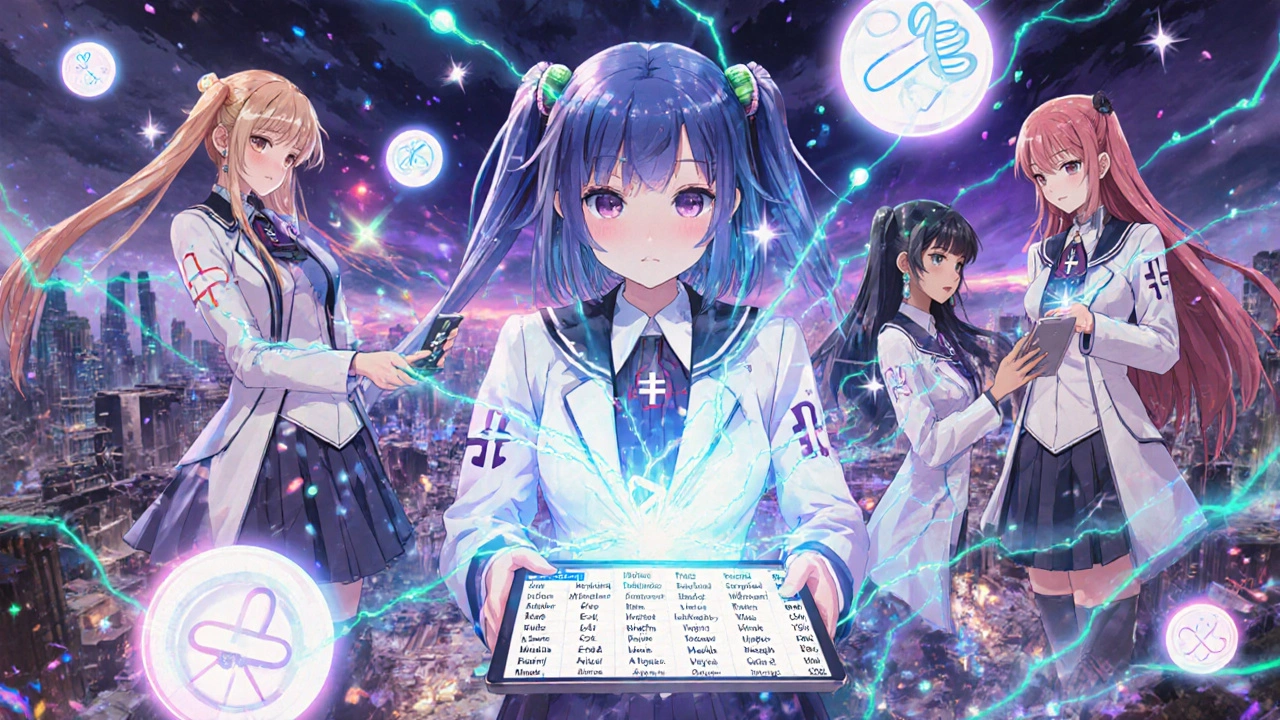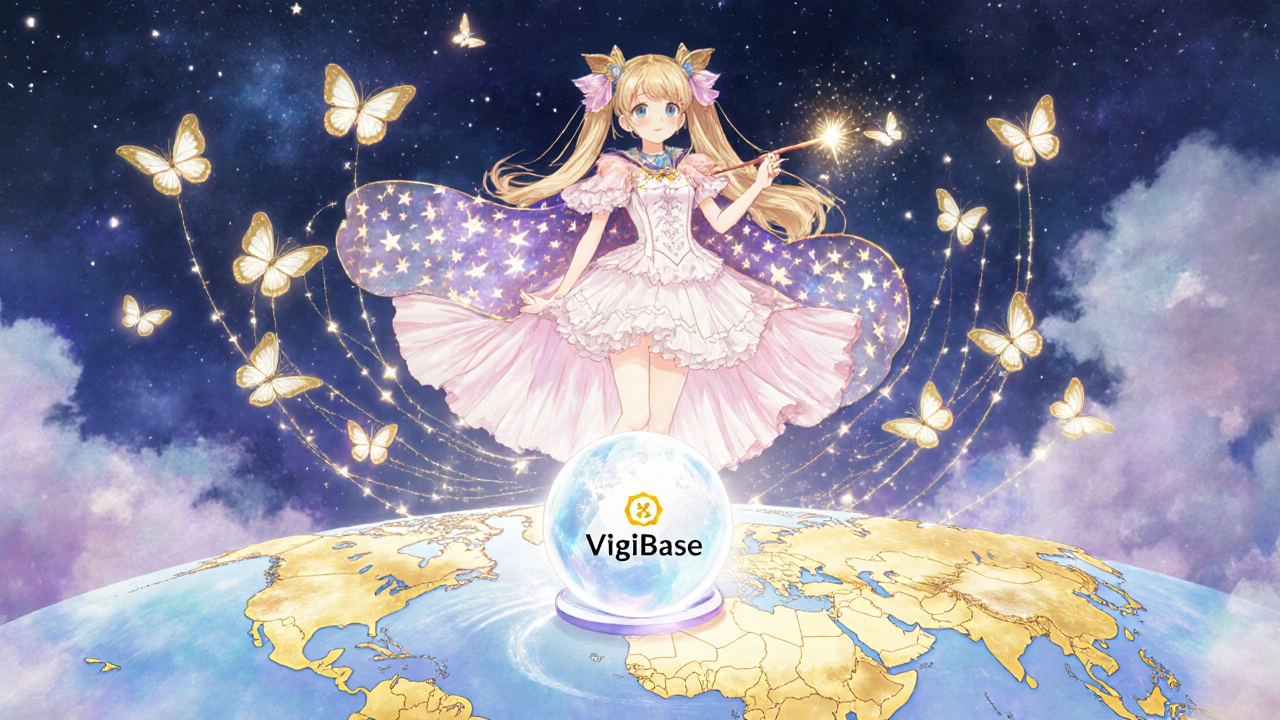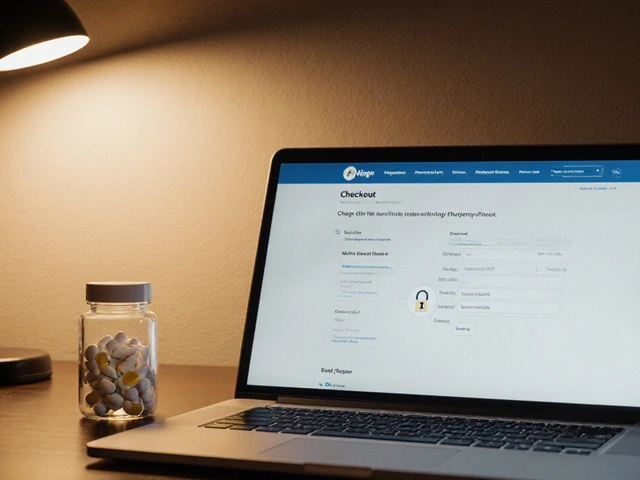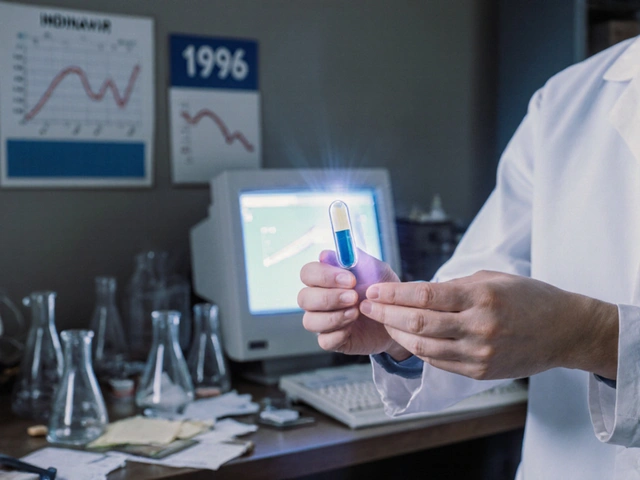Every time someone takes a medicine, there’s a quiet system working behind the scenes to watch for problems. It doesn’t make headlines. It doesn’t show up on TV ads. But when a new side effect shows up in a country halfway across the world, this system is the first to notice - and the only thing standing between a safe drug and a public health crisis.
How the Global Drug Safety Net Works
The backbone of international drug safety is the WHO Programme for International Drug Monitoring (a global network coordinated by the World Health Organization to collect and analyze reports of adverse drug reactions from over 170 countries). It started in 1968, after the World Health Assembly realized that drugs used by millions could have hidden dangers that only show up after widespread use. Back then, the only way to find out was to wait for doctors to report unusual side effects. Today, that system has grown into something far more powerful.At the center of it all is VigiBase (the global database of individual case safety reports managed by the Uppsala Monitoring Centre, containing over 35 million reports as of 2023). Every time a doctor, pharmacist, or even a patient reports a bad reaction to a medicine - whether it’s a rash, liver damage, or a sudden heart rhythm problem - that report gets added to VigiBase. These aren’t just random notes. Each report follows strict rules: the drug name is coded using WHODrug Global (a standardized dictionary with over 300,000 medicinal product names across 60+ therapeutic classes), the reaction is classified with MedDRA (a medical terminology system with 78,000+ standardized terms organized into 27 organ systems), and the data is sent electronically using the E2B(R3) (an international standard for electronic transmission of adverse event data) format.
It’s not just about collecting reports. It’s about finding patterns. A single report of a rare side effect means little. But if five doctors in five different countries report the same issue with the same drug within a few months, that’s a signal. That’s when the system kicks into high gear. The Uppsala Monitoring Centre (the WHO Collaborating Centre responsible for managing VigiBase and conducting global signal detection) uses advanced algorithms - now boosted by artificial intelligence - to spot these patterns. In 2023, AI helped reduce false alarms by 28%, making the system faster and more accurate.
Regional Systems: EU, U.S., and Beyond
Not every country plays by the same rules. The European Union’s EudraVigilance (a mandatory, legally binding pharmacovigilance system managed by the European Medicines Agency with 98% electronic reporting and 1.2 million new reports annually) operates like a tightly regulated machine. Pharmaceutical companies in the EU are legally required to report adverse events within 15 days. The Pharmacovigilance Risk Assessment Committee (PRAC) (the EU body responsible for evaluating drug safety signals and making regulatory decisions) has a 60-day deadline to review urgent signals - and they meet it 92% of the time. That speed saves lives.The U.S. FDA Adverse Event Reporting System (FAERS) (a voluntary reporting system that receives around 2 million reports per year and contributes data to VigiBase) is different. It’s open to anyone - patients, doctors, pharmacists, even drug companies. There’s no legal requirement for timely reporting. That means the data is rich in volume but messy in timing. Still, FAERS has helped uncover serious risks, like the link between certain diabetes drugs and pancreatitis.
And then there’s the rest of the world. While the EU and U.S. have robust systems, many low-income countries struggle to even collect basic data. In Sweden, healthcare workers report 1,200 adverse events per 100,000 people each year. In Nigeria, it’s 2.3. That’s not because Swedes have more side effects - it’s because they have better reporting systems. The WHO Global Benchmarking Tool (a framework assessing national pharmacovigilance systems across four maturity levels) found that 28% of countries still have no formal system at all. Even among those that do, many lack trained staff, funding, or internet access to submit reports.
Why Some Countries Are Left Behind
The gap isn’t just about money - though that’s a big part of it. High-income countries spend about $1.20 per person on pharmacovigilance each year. Low-income countries spend $0.02. That’s not enough to hire trained pharmacovigilance officers, buy software, or even keep computers running in rural clinics.Training is another hurdle. WHO recommends 40 hours of specialized training for pharmacovigilance staff. A 2022 survey across Southeast Asia found that 68% of officers had received less than 15 hours. Without proper training, reports are incomplete, misclassified, or never filed at all.
Technology helps, but it’s not a magic fix. Ethiopia, for example, cut its reporting time from 90 days to 14 after adopting the Pharmacovigilance Monitoring System (PViMS) (a web-based tool developed by MTaPS to enable real-time reporting from health facilities). But only 35% of health facilities there still submit regular reports - because many have no stable internet connection. In rural areas, reports are still written on paper and mailed in, sometimes taking months to reach the capital.
And then there’s the problem of trust. In some countries, patients and doctors fear reporting side effects will lead to lawsuits, stigma, or even the withdrawal of a medicine they rely on. That silence hides risks.

The Hidden Power of Global Data
This system isn’t just about catching bad drugs. It’s about saving lives in ways you’d never expect.Take Dengvaxia, the dengue fever vaccine. In 2017, health workers in the Philippines reported a strange pattern: children who had never had dengue before got severely ill after vaccination. That signal didn’t come from a lab in Europe or a study in the U.S. It came from a clinic in Manila. Because the WHO system was in place, that report was quickly shared globally. Within months, the vaccine’s use was restricted in several countries. Without that global network, thousands more children might have been harmed.
Or consider the rise in liver injuries linked to certain herbal supplements. These aren’t regulated like prescription drugs. But when reports started piling up in VigiBase from Brazil, South Africa, and Australia, regulators took notice. That led to new warnings - and in some places, outright bans.
The system also helps when drugs are used in new ways. A medicine approved for high blood pressure might be prescribed off-label for anxiety. If enough people report side effects in that context, the system picks it up. That’s how we learn what a drug can really do - not just in clinical trials, but in real life.
What’s Changing Right Now
The system is evolving. In 2024, Zanzibar joined the network. Ukraine restarted its national center after war disrupted operations. Yemen, despite years of conflict, reactivated its reporting system in late 2022.One of the biggest changes coming is the ISO IDMP (International standards for identifying medicinal products across 100+ data elements, planned for full implementation by 2025). Right now, the same drug might be listed under 10 different names in different countries. That makes it hard to match reports. IDMP will fix that. Once it’s in place, a report from India about a drug called “Metformin 500mg” will be automatically linked to the same drug in Germany, Brazil, or Canada - even if it’s sold under a different brand name.
Public access is also improving. VigiAccess (a free public portal launched in 2015 that lets anyone search anonymized data from VigiBase) has had over 12 million visits. Patients, researchers, and even journalists now use it to check if a drug they’re taking has been linked to unusual side effects.
And the money is flowing. The global pharmacovigilance market is expected to hit $13 billion by 2030. Big pharma now spends millions on dedicated safety teams - up from 150 full-time staff per company in 2018 to 250 today. That’s because regulators are watching closer than ever.

What’s Still Broken
Despite progress, the system has deep flaws. One of the biggest? Inconsistent ways of judging whether a drug actually caused a side effect. A 2023 study found that EU and U.S. experts agreed on causality in only 63% of the same case reports. That means the same patient report could be labeled “likely caused by the drug” in one country and “unrelated” in another. That inconsistency delays action.And while AI helps, it’s not perfect. Algorithms can miss rare events if they’re too rare. They also can’t understand cultural context - like why a certain herbal remedy is mixed with a prescription drug in one region but never in another.
Most worrying: 42% of low- and middle-income countries still don’t have a functional system that meets WHO’s minimum standards. That means drugs used in those countries are flying blind. No one’s watching. No one’s listening.
Don’t assume safety is guaranteed. Just because a drug is approved doesn’t mean it’s risk-free. The system works best when people report - even small, weird side effects. A headache after taking a new pill? A rash that won’t go away? A sudden change in mood? Write it down. Tell your doctor. Submit it. That one report could be the thread that pulls back the curtain on a global problem.
Frequently Asked Questions
What is pharmacovigilance?
Pharmacovigilance is the science and practice of detecting, assessing, understanding, and preventing adverse effects or any other drug-related problems. It’s the system that watches for unexpected side effects after a medicine is used by the public - not just in clinical trials.
How does VigiBase work?
VigiBase is the World Health Organization’s global database of individual case safety reports. It collects reports of adverse drug reactions from over 170 countries. Each report is coded using standardized medical terms and drug names, then analyzed for patterns. When a new safety signal is detected, regulators around the world are alerted.
Why are reports from rich countries so much higher?
High-income countries have better infrastructure: trained staff, electronic reporting systems, public awareness campaigns, and funding. In Sweden, healthcare workers report 1,200 adverse events per 100,000 people yearly. In Nigeria, it’s just 2.3. That doesn’t mean Swedes have more side effects - it means they’re more likely to report them.
Can I report a side effect myself?
Yes. In many countries, patients can report side effects directly through national systems - like the Yellow Card Scheme in the UK or MedWatch in the U.S. Even if your country doesn’t have a public portal, you can tell your doctor and ask them to file a report. Your report matters.
What’s the difference between EudraVigilance and VigiBase?
EudraVigilance is the European Union’s mandatory, legally enforced system for reporting adverse drug reactions. VigiBase is the WHO’s global database that collects reports voluntarily from 170+ countries. EudraVigilance is faster and more regulated; VigiBase is broader and catches region-specific risks. Many EU reports are also shared with VigiBase.
How do new drugs get monitored after approval?
After approval, drugs enter what’s called the post-marketing phase. Safety systems like VigiBase and EudraVigilance collect real-world reports. Companies must report serious side effects quickly. Regulators use this data to update labels, issue warnings, or even withdraw drugs. This is how risks like blood clots with certain vaccines or liver damage from herbal supplements were found.
Is artificial intelligence used in drug safety monitoring?
Yes. The Uppsala Monitoring Centre uses AI to scan VigiBase for unusual patterns that humans might miss. AI helps reduce false alarms by 28% and speeds up detection of new safety signals. But it doesn’t replace human experts - it helps them focus on the most serious cases.
What’s the future of global drug safety monitoring?
The future lies in better data sharing, standardized product identification through ISO IDMP, and more investment in low-income countries. Real-time data from electronic health records and wearable devices will also play a bigger role. But the biggest challenge remains: making sure no country is left behind. Global safety only works if everyone is watching.






Comments
Kyle Swatt
November 17, 2025 AT 05:36 AMThey call it a safety net but it feels more like a sieve with gold threads woven in for rich countries and burlap for everyone else. We monitor pills like they’re nuclear codes in Stockholm while in Lagos a kid with a fever gets a pill from a guy on a motorcycle and no one’s tracking if he turns blue three days later. This isn’t science-it’s a class system with lab coats.
Deb McLachlin
November 17, 2025 AT 07:53 AMThe structural disparities in pharmacovigilance infrastructure present a profound ethical dilemma. While technological advancements such as AI-driven signal detection and ISO IDMP standardization are commendable, they are rendered ineffective without equitable investment in human capital and digital access in low-resource settings. The disparity in reporting rates is not indicative of differential adverse event prevalence, but rather of systemic neglect.
Leslie Douglas-Churchwell
November 17, 2025 AT 23:30 PMAI is watching your pills. Big Pharma owns VigiBase. The WHO? Just their PR arm. They let you report side effects so they can say ‘we’re transparent’ while quietly burying the data that implicates their billion-dollar drugs. You think your rash is ‘unrelated’? Nah. It’s in the database. They just need 47 more reports from Sweden before they ‘notice.’ And don’t get me started on IDMP-another global ID system to track you, your meds, and your DNA next. 😈💉
shubham seth
November 18, 2025 AT 16:21 PMLet’s be real. The entire system is a glorified spreadsheet run by overworked interns who don’t know if ‘headache’ means stress or stroke. You think EudraVigilance is tight? It’s just bureaucracy with better fonts. And FAERS? A dumpster fire with 2 million entries and zero context. If your grandma took a supplement and died, and her nephew didn’t file a report on his phone, it never happened. This isn’t science-it’s a lottery where the house always wins.
Kathryn Ware
November 20, 2025 AT 16:18 PMI’ve been a pharmacist for 22 years and I can’t tell you how many times a patient’s tiny, weird side effect turned into a global warning. One woman in Ohio said her new blood pressure med made her taste metal. We thought it was anxiety. Two months later, three other reports came in from Canada and Germany. Turns out it was a rare liver enzyme issue. That’s why reporting matters-even if it feels pointless. Your ‘weird’ is someone else’s救命信号. And yes, I used an emoji because this stuff is emotional. ❤️
kora ortiz
November 22, 2025 AT 14:06 PMIf you see something say something. No excuses. No ‘I’m not a doctor.’ Your report could stop a child from dying. The system isn’t perfect but it only works if you use it. Every single report counts. Don’t wait for someone else to do it. Do it now. This isn’t optional. It’s your responsibility. Period.
Jeremy Hernandez
November 23, 2025 AT 07:59 AMYeah yeah, ‘report your headache’ like I give a damn. Meanwhile Big Pharma’s making billions off the same pills that made my cousin’s liver explode. They don’t want to fix the system-they want you to keep reporting so they can say ‘we’re monitoring.’ Meanwhile, the guy in rural India who took the same pill? He’s dead and no one even knows his name. This whole thing is a PR stunt with a fancy database.
Tarryne Rolle
November 23, 2025 AT 17:51 PMInteresting how the ‘global’ system is built on Western medical paradigms. Who decided that MedDRA and WHODrug are the universal languages of suffering? What about traditional healers in Ghana who use 17 herbs with a single root? Or the Ayurvedic combo in Kerala that’s been used for 500 years? The system doesn’t see them. It only sees pills with barcodes. That’s not safety-that’s cultural erasure dressed up as science.
saurabh lamba
November 23, 2025 AT 21:46 PMAI reduces false alarms by 28%? Cool. But what about the 72% it misses? Or the ones it flags because someone in Finland took a pill while eating durian? The system’s got zero clue about diet interactions, cultural meds, or sleep patterns. It’s all numbers. No soul. No context. Just a robot reading a spreadsheet while the real world burns.
Kiran Mandavkar
November 23, 2025 AT 22:19 PMYou think this is about safety? It’s about liability. The WHO doesn’t care if a Nigerian child dies. They care if a German pharma CEO gets sued. The entire architecture is designed to protect corporations, not people. The ‘global’ network is just a legal shield wrapped in humanitarian language. And you? You’re the unpaid data point. Contribute your pain. Make their dashboard pretty.